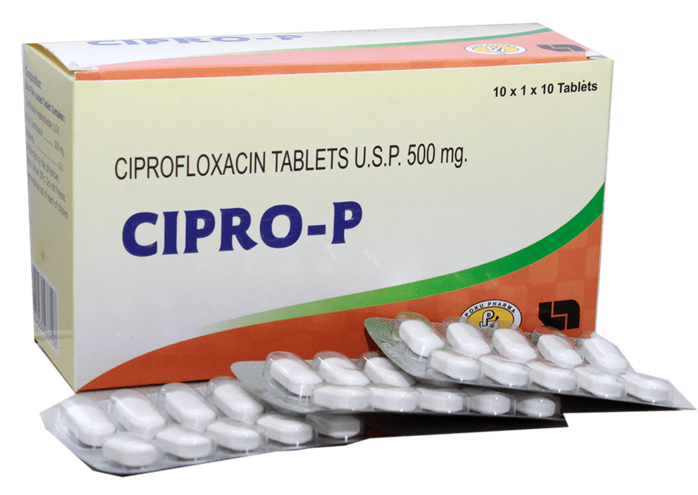The community health nurse is making a list of needed supplies in the event of a bioterrorism attack. The nurse recognizes that community members exposed to anthrax will need access to which of the following medications?
Fluconazole (Diflucan)
Ciprofloxacin (Cipro)
Varenicline (Chantix)
Potassium iodide (KI)
The Correct Answer is B
Choice A reason: Fluconazole (Diflucan) is an antifungal medication that is used to treat infections caused by fungi, such as candidiasis, cryptococcosis, and histoplasmosis. It is not effective against anthrax, which is a bacterial infection caused by Bacillus anthracis.
Choice B reason: Ciprofloxacin (Cipro) is an antibiotic medication that belongs to the class of fluoroquinolones. It is used to treat various bacterial infections, including anthrax. It works by inhibiting the DNA synthesis of the bacteria and preventing them from multiplying. Ciprofloxacin is one of the recommended medications for post-exposure prophylaxis and treatment of anthrax, according to the Centers for Disease Control and Prevention (CDC).
Choice C reason: Varenicline (Chantix) is a medication that is used to help people quit smoking. It works by blocking the effects of nicotine on the brain and reducing the cravings and withdrawal symptoms. It has no role in the prevention or treatment of anthrax.
Choice D reason: Potassium iodide (KI) is a medication that is used to protect the thyroid gland from radioactive iodine in the event of a nuclear or radiological emergency. It works by saturating the thyroid with non-radioactive iodine and preventing it from absorbing radioactive iodine. It has no role in the prevention or treatment of anthrax.

Nursing Test Bank
Naxlex Comprehensive Predictor Exams
Related Questions
Correct Answer is C
Explanation
Choice A reason: A skilled nursing facility is a type of long-term care facility that provides 24-hour nursing care and supervision for residents who need assistance with activities of daily living, such as bathing, dressing, eating, and toileting. A skilled nursing facility may not be suitable for a young client with multiple sclerosis who has the potential for improvement and recovery.
Choice B reason: Home care services are a type of community-based care that provides medical and personal care to clients in their own homes. Home care services may include nursing, physical therapy, occupational therapy, speech therapy, social work, or home health aide services. Home care services may be appropriate for a client with multiple sclerosis who has mild to moderate symptoms and a supportive family or caregiver.
Choice C reason: A rehabilitation facility is a type of short-term care facility that provides intensive physical and occupational therapy to clients who have functional impairments due to injury, illness, or surgery. A rehabilitation facility may also provide medical, nursing, and psychological care to clients who need them. A rehabilitation facility may be suitable for a client with multiple sclerosis who has significant muscle weakness and needs to regain strength, mobility, and independence.
Choice D reason: A sub-acute care facility is a type of transitional care facility that provides medical and nursing care to clients who are stable but need complex monitoring or treatment that cannot be provided at home or in a skilled nursing facility. A sub-acute care facility may also provide rehabilitation services to clients who need them. A sub-acute care facility may not be appropriate for a young client with multiple sclerosis who has the potential for improvement and recovery.

Correct Answer is D
Explanation
Choice A reason: The client's financial resources is not the most important factor for the nurse to consider. Although Meals-on-Wheels is a low-cost or free service that provides nutritious meals to homebound seniors and people with disabilities, it does not require a specific income level or financial status to qualify. The nurse should focus on the client's nutritional and functional needs, rather than their economic situation.
Choice B reason: The client's level of family support is not the most important factor for the nurse to consider. Although having family members who can assist with meal preparation and delivery can be helpful and beneficial for the client, it is not a requirement or a guarantee for receiving Meals-on-Wheels. The nurse should assess the client's individual capabilities and preferences, rather than their family availability or involvement.
Choice C reason: The client's access to transportation is not the most important factor for the nurse to consider. Although having access to transportation can enable the client to obtain food and groceries from other sources, such as stores, markets, or restaurants, it is not a criterion or a barrier for receiving Meals-on-Wheels. The nurse should evaluate the client's dietary and health needs, rather than their mobility or transportation options.
Choice D reason: The client's ability to prepare meals is the most important factor for the nurse to consider. Meals-on-Wheels is designed to serve clients who are unable to cook or shop for themselves due to physical, mental, or social limitations. The nurse should determine if the client has any impairments or challenges that prevent them from preparing their own meals, such as vision loss, arthritis, dementia, or isolation. If the client has difficulty or inability to prepare meals, they may be eligible for Meals-on-Wheels.
Whether you are a student looking to ace your exams or a practicing nurse seeking to enhance your expertise , our nursing education contents will empower you with the confidence and competence to make a difference in the lives of patients and become a respected leader in the healthcare field.
Visit Naxlex, invest in your future and unlock endless possibilities with our unparalleled nursing education contents today
Report Wrong Answer on the Current Question
Do you disagree with the answer? If yes, what is your expected answer? Explain.
Kindly be descriptive with the issue you are facing.
